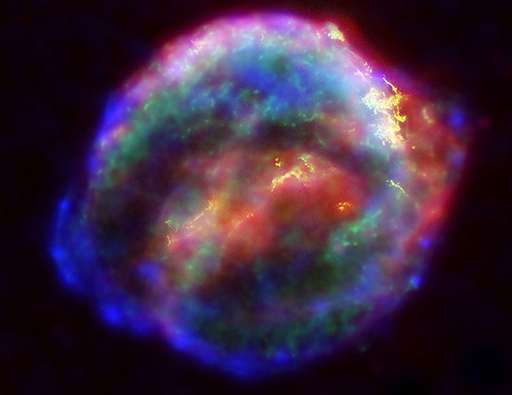2.3.6 Exploding supernova
What happens to the supergiant next?
As before, the core collapses under gravity and the temperature rises until fusion between the iron nuclei could take place. But this is where things change: when elements lighter than iron fuse together, they give out energy. To get iron nuclei to fuse together, energy needs to be taken in. When this happens, there is no longer sufficient energy to support the star against gravity, and the core collapses even more rapidly.
The collapsing core continues to rise in temperature until it reaches the point at which the nuclei of iron atoms start to break up into protons and neutrons.
The core stops collapsing when it reaches a temperature of about 1 million million degrees and a density of about a million million million times that of rock – fairly unimaginable! Even though the core of the star has stopped contracting, its outer layers are still falling inwards. As this material hits the core, its energy is turned outwards, and the star explodes as a supernova.

Whatever the cause of the explosion, the high temperature allows the star to undergo one final round of nucleosynthesis, producing the heavy elements, which include gold and uranium. The explosion takes only a few seconds, and so much energy is released that the star brightens by about a hundred million times.
If a supernova occurred in our own galaxy, it would be visible during the day for a few weeks. During the explosion, all the elements produced by nucleosynthesis during the star’s lifetime are thrown back into the galaxy, becoming part of the interstellar gas and dust which forms the next generation of stars. Without supernovae, planets would not exist – and neither would we!
At the end of the explosive supernova, a supernova remnant is left behind. Next, you’ll look at what becomes of the final remnants of a dying star.
